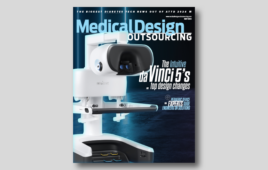 Researchers at the University of Pennsylvania are touting a new way to potentially rebuild complex body tissues to fix common injuries like cartilage degeneration.
Researchers at the University of Pennsylvania are touting a new way to potentially rebuild complex body tissues to fix common injuries like cartilage degeneration.
Following the publication of research in Advanced Materials, those involved are suggesting that the rebuilding process for these body tissues could be done by using a magnetic field and hydrogels, according to a news release.
“We found that we were able to arrange objects, such as cells, in ways that could generate new, complex tissues without having to alter the cells themselves,” the study’s first author, Penn Medicine graduate student Hannah Zlotnick said in the release. “Others have had to add magnetic particles to the cells so that they respond to a magnetic field, but that approach can have unwanted long-term effects on cell health. Instead, we manipulated the magnetic character of the environment surrounding the cells, allowing us to arrange the objects with magnets.”
Zlotnick said there is a natural gradient from the top of cartilage to the bottom, which is the contact point with the bone. At that attachment point, there is a low number of cells, so the researchers, including senior author Robert Mauck, who directs the McKay Lab at Penn, looked to find ways to “repave the potholes” in cartilage, rather than fill them in.
The team found that, if they added a magnetic liquid to a three-dimensional hydrogel solution, cells and other non-magnetic objects could be arranged into specific patterns that mimicked natural tissue in tandem with an external magnetic field.
Once the hydrogel solution and the objects in it experience brief contact with the magnetic field, they are exposed to ultraviolet light, locking everything in place before the magnetic solution is diffused out. Once this happened the engineered tissues maintained the necessary cellular gradient, according to the researchers.
As a result of this, the researchers recreated articular cartilage that covers the ends of bones, leading them to believe they’ve taken a step toward creating longer-lasting, more efficient fixes with damaged cartilage and other issues.
“These magneto-patterned engineered tissues better resemble the native tissue, in terms of their cell disposition and mechanical properties, compared to standard uniform synthetic materials or biologics that have been produced,” Mauck said. “By locking cells and other drug delivering agents in place via magneto-patterning, we are able to start tissues on the appropriate trajectory to produce better implants for cartilage repair.
“This new approach can be used to generate living tissues for implantation to fix localized cartilage defects, and may one day be extended to generate living joint surfaces,” Mauck explained.




